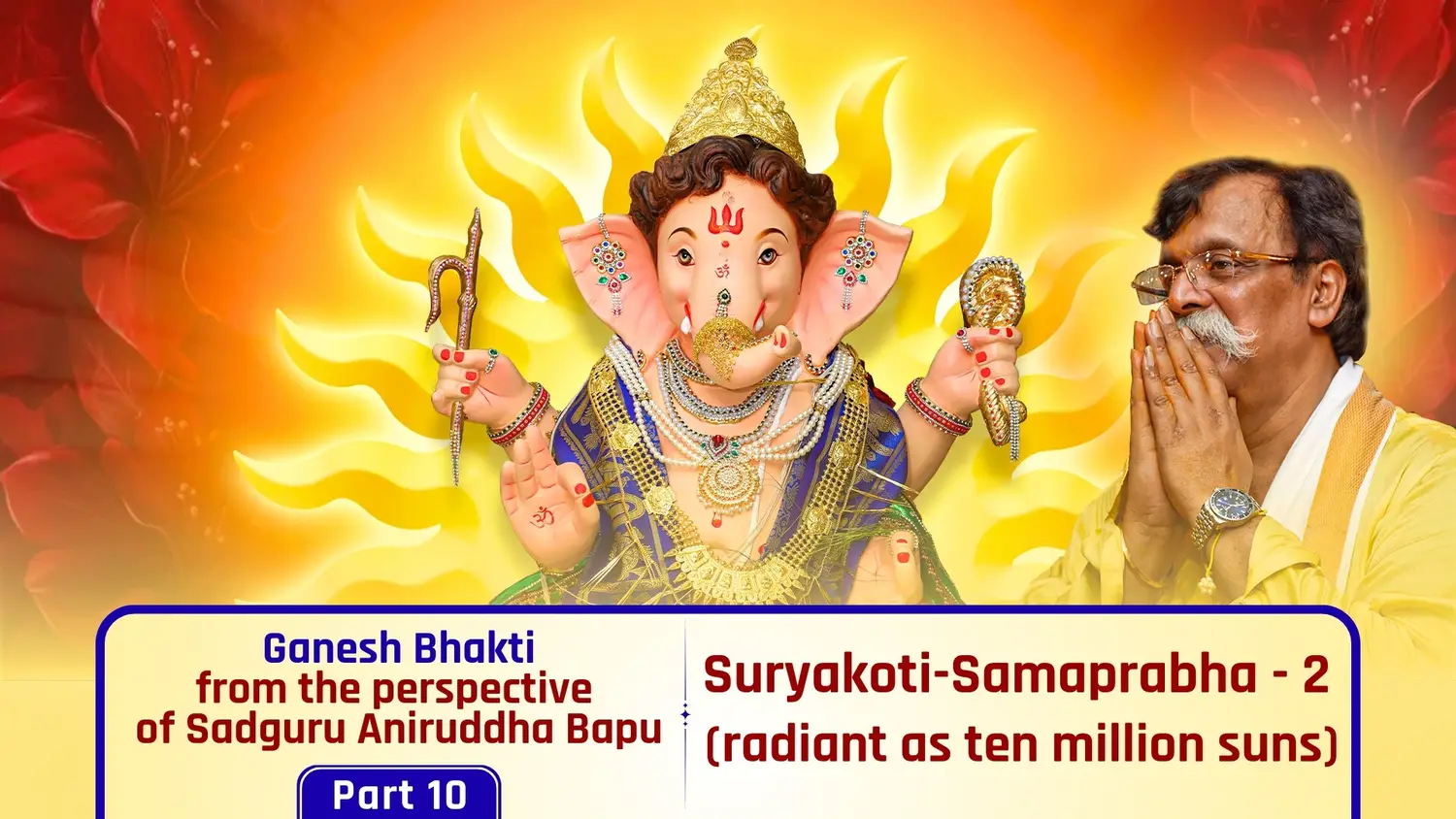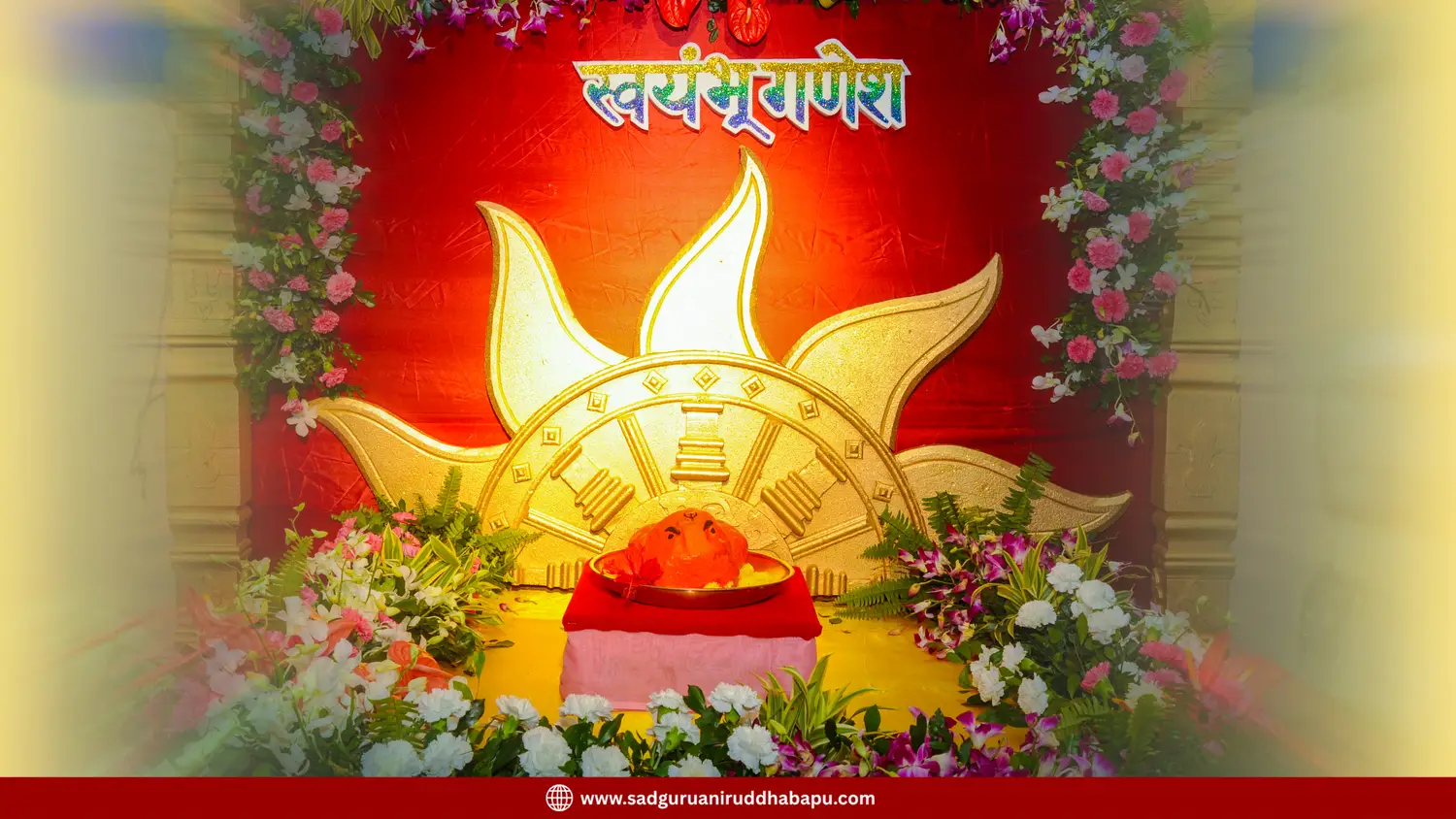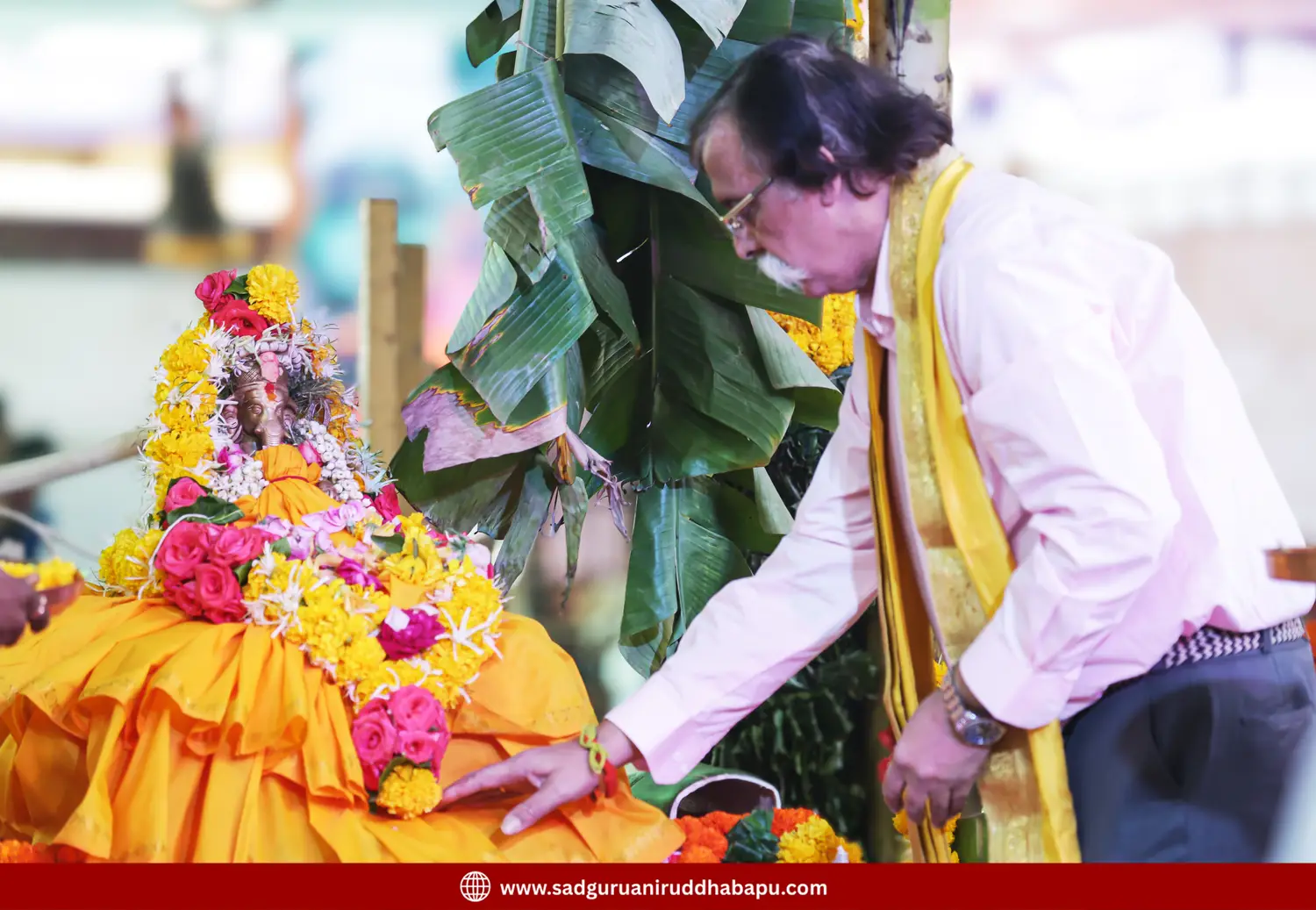Suryakotisamaprabha – 2

Reference: Sadguru Shree Aniruddha Bapu’s editorial published in Dainik Pratyaksha dated 05-09-2006
In the previous post, we looked at the story of the slaying of Andhakasura, as expounded by Sadguru Aniruddha. That story is one which firmly binds together all five of the devotional sects in India. While establishing the presiding deities of the Shaiva, Shakta (Devi-worshipping), Vaishnava, Ganapatya, and Saura traditions, equally and simultaneously, the story beautifully conveys that although the colours may be many, the sky is but one.

In this story, several important spiritual principles have also been expounded. Today, we shall look at just a few of them. From the very first wrathful word of Shree Mahadeva, Shree Vishnu manifested a demon. This was not a real demon, but merely an effigy created in compliance with the mother’s word, only to scare the beloved child. This effigy in the form of a demon, made by Shree Vishnu from Shiva’s wrathful words represents the awe or fear of God that exists within the innocent human mind.
This awe is generated by Sattavguni Vishnu i.e., the conscience (vivek) present within every human being to prevent any wrondoings, in other words, to ensure that no ‘transgression of limits’ (Pradnyaparadh) occurs. Moreover, He generates this very awe only through Bhagwan Shiva, who is the manifestation of pure consciousness. Every human being possesses both intellect-based conscience (vivek) and an innate awareness of purity and sanctity; not due to that person's good merits (punya), but because of the true and pure compassion (Akaran karunya) of God. However, as the Pradnyaparadha (wrongs committed against the intellect) increase owing to freedom of action (Karmaswatantrya), the presence of these qualities begins to diminish. And in keeping with the principle ‘Pradnyaparadha rogah’ (it is from wrongs committed against intellect that diseases arise), calamities keep appearing in human life, while the capacity to face them steadily declines. Through this leela of Balganesh, the principle of adhering to limits is beautifully brought forth. Whatever the Jagadamba Parvati, the Mother who embodies Dravyashakti(the original energy which transforms into matter)-nature, deems inappropriate at a young age for Paramatma, the boundaries or limits she sets must rightly and necessarily be observed. With this very leela, Paramatma Shree Mahaganapati imparts the lesson to man that violating the limits set by elders and the revered great ones is always inappropriate.

When such limits are breached even in thought, a bogeyman-like effigy arises; but if that thought turns into action, will it not bring forth a real demon? Therefore, every human being must undertake any action only with full awareness of one’s age, one’s physical and mental strength, one’s duties, and one’s responsibilities.
Because of this appropriate act by Shree Vishnu and Jagadamba Parvati, Shiva entrusted Balganesh back to his mother and set out for his own task. This symbolizes, when the subconscious mind through conscience(vivek), recognizes the limits of worldly power; at that very moment the inner awareness of purity continues its work of destroying demons while journeying throughout the universe. Once limits are observed, both the power and awareness of purity of the subconscious mind begin to grow together, and then the destruction of the demons within the mind and in life itself becomes inevitable.
Later, the fear that had arisen in the mind of Balganesh was spat out by Him, and from that very act emerged the terrifying and ever-growing demon, Andhakasura. When a human being follows limits merely out of pressure or coercion, there comes a time when he feels the urge to cast off that pressure. Here, of course, the “pressure” referred to is none other than the awe of the laws of the Almighty. When this awe begins to feel burdensome to man, at a certain moment, the human mind turns away from conscience and discards this sense of awe. Naturally, its place is then occupied by perverted ego and arrogance. This very darkness, this very state, is what takes the form of Andhakasura.
Once Andhakasura manifests, he only continues to grow. The tendency that 'no matter what I do, that God cannot harm me in any way' is the real darkness—the Andhakasura.
However, being the son of Shiva who emobodies the purity itself, and of Parvati, who signifies the power to act (Dravyashakti), the Mahaganapati symbolizes the Sattvaguna enriched with the qualities related to matter (Dravyaguna). This very Sattvaguna, that is, the Mahaganapati, even if it is minimal in human being or appears young and small in stature, is capable of completely annihilating this Andhakasura.
"In this battle, the Mahaganapati who represents the Sattvaguna equipped with Dravyaguna is accompanied by Shree Vishnu who represents the Sattvaguna equipped with Bhavaguna and in an instant, the radiance of that Sattvaguna becomes 'as radiant as a million suns' (Kotisurya-samaprabha). And then? That Balganesh easily destroys Andhakasura. The Sattvaguna endowed with Bhavaguna is, in fact, the influence of bhakti."
At the end of the editorial, Sadguru Shri Aniruddha Bapu writes -
"Friends, in everyone's life, at some turn or another, this Andhakasura keeps reappearing. However, the worship of that auspicious form of Mahaganapati and bhakti towards your tutelary deity (ishtadaivata) can gently lift you from that turn and place you on the path of light."
